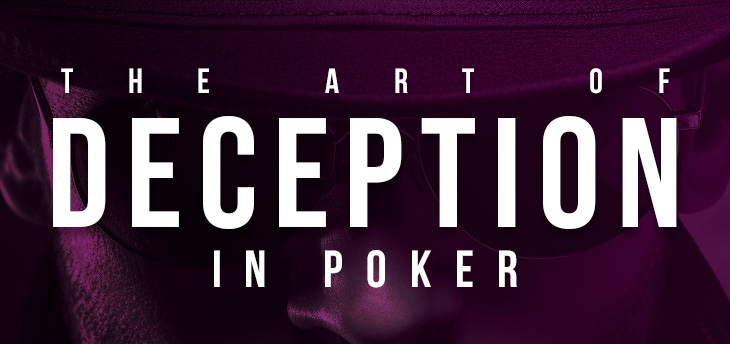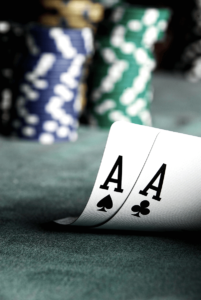The Art of Deception in Poker: Tips and Techniques

Is there a more delightfully deceptive game than poker? Originating from the murky smoky riverboats of the Mississippi, poker has always been associated with a certain mystique, a certain… art of deception. And why not? After all, the iconic phrase “poker face” didn’t originate in a pop song, it stemmed from the very essence of the game itself. From amateur hands to professional showdowns, poker has consistently demanded a mastery over the unseen, the ability to bluff and to call bluffs, and a keen insight into the human psyche. So, how does one become a master at this artful game? Let’s delve into the advanced tips and techniques that will make you a veritable Houdini at the poker table.
Don’t Just Play Your Cards, Play the Players
In poker, you’re not merely battling a pair of aces or a flush. You’re battling the person across the table, the one who is trying to outwit you, outplay you, outlast you. So, how do you flip the script and ensure that it’s you doing the outwitting, outplaying, and outlasting?
Develop your observation skills. The flicker of an eyelid, a tiny smirk, a nervous tick, a quickened pulse, all these might betray your opponent’s hand before they even lay their cards on the table. Ah, you might be thinking, isn’t this a little… Sherlock Holmes-ish? Yes, it is, and what’s more intriguing than becoming a detective at the poker table?

Confidence and Overconfidence
When it comes to mastering the art of deception in poker, there is a thin line between confidence and overconfidence. Let’s break this down, shall we? Confidence is the trust you have in your skills and your ability to read the game. It’s a necessity for a strong poker player. Overconfidence, on the other hand, is dangerous; it’s when you believe your poker prowess to be invincible, and it can lead to catastrophic decisions.
Remember, even the best lose sometimes, and acknowledging this fact is what separates the good players from the great. Don’t let the thrill of a few victorious hands blind you from seeing the bigger picture.
Intentional Weakness
One of the most effective techniques in the art of deception in poker is projecting a carefully crafted illusion of weakness. What does this look like? It’s a seemingly random play that seems to lack strategy or foresight. However, beneath this facade lies a calculated move intended to lure your opponents into a false sense of security.
For instance, imagine you have a strong hand, but instead of betting aggressively, you check or call. This could convince other players that your hand is weaker than it is, prompting them to bet more. Then, when the time is right, you strike, surprising your opponents and seizing the pot. However, remember, overuse of this tactic can make it predictable. The key is to use it sparingly and at just the right moments.
The Art of Semi-Bluffing
Straight up bluffing is a commonly known technique, and most seasoned players have mastered the art of spotting a bluff. So, enter semi-bluffing, an advanced technique that adds an extra layer to the art of deception in poker.
A semi-bluff is essentially a bet or a raise with a hand that is not yet made but has the potential to become a strong hand. The idea is twofold: you might win the pot right there if your opponents fold, or, if they call, you might still win by making your hand on a later round. Semi-bluffing adds depth to your game and makes it harder for other players to read your play.
Check-Raising
Check-raising is a move as strategically significant in poker as castling in chess. It involves checking your hand initially, then raising in response to a bet by your opponent. This move can throw your opponents off balance, making them second guess their own hands and strategy. However, like any sophisticated technique, check-raising must be used judiciously and at the right times to maintain its effectiveness.

The Art of Folding
Yes, you read that right. Part of the art of deception in poker involves knowing when to fold. No matter how well you’ve cultivated your poker face or perfected your bluffing techniques, there will be moments when folding is the best play. It’s better to lose a battle now than to lose the war because you refused to retreat when the odds were against you. Remember, there is no shame in folding. Even the most decorated generals know when to fall back, regroup, and plan for the next attack.
Conclusion: Embrace the Art, Master the Game
Poker is not just a game of cards; it’s a game of people, a dance of psyches, a battle of wills. Mastering the art of deception in poker requires a deep understanding of the game, its players, and the myriad tactics that contribute to a winning strategy. Remember, poker is much more a game of skill than a game of chance. So, put on your poker face, gather your wits about you, and prepare to engage in this artful game. After all, isn’t it a thrill to be the illusionist, the grand master of the unseen, and the orchestrator of the game’s tempo?
